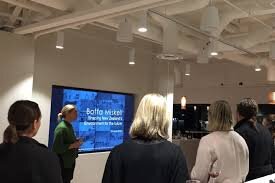
Teaming by design - Teaming in the new world
Teaming by Design
A tidal wave of change is occurring that makes the way we work almost unrecognisable with economic challenges and competitive markets—all shifting concurrently—change is not only constant but also exponential in its pace and scope. Companies in all industries are experiencing the effects of change in not just working but especially supporting our people to be the best they can be. Many teams and their leaders have faced fastpace challenges and uncertainty – requiring a stronger sense of team.. This shift has placed greater importance on evolving our techniques to support teaming to break down silos and strengthen organisation-wide innovation.
Taking insights from recent work surveys, WorkFuture has distilled four common themes in this tidal wave of change.
Four Change themes
1 Shaping the new way we work together
2 Introducing teaming by design and creating organisation-wide cadence
3 Continuing to attract talent and onboard meaningfully
4 Taking learning and development to the next level across the workforce
The first two themes address the opportunities of change in the way we organise our people as we consider which new behaviours arising , we want to make part of our culture.
1 Shaping a values-led culture
To successfully introduce change to the way we work: modernise, evolve or introduce efficiencies – it requires an intentional collaboration of those leading our culture, technology and work programs, providing engaging hosting experiences, joined and aligned with the top levels of the organisation.
2 Introducing teaming by design - our human craving for a sense of team
This compeling reason to return needs to be clear on how our culture enhances how we team and has us looking at better ways to avoid unintended silos and misaligned work across the business. Setting out how collaboration enables us to make complex business decisions with the right pace.
Looking beyond talking heads studies highlight a gap to truly being able to collaborate and innovate in ambiguity. We have known for some time that the strength of teaming is key to reducing the time to bring innovations to reality. People do not all work in the same way. Instead the way they work is based upon a number of factors. Work practices consider the broad nature of work, and how people might make decisions about choosing different things. The factors can include role, responsibilities, personalities, skills and capabilities, and performance levels. Work practices can vary within a tight or disjointed team.
A moderating factor of work practices in an organisation undergoing change in is the aspiration of that organisation – are they seek more connectivity, agility, collaborative behavour, for example. As we respond to the economy challenge’s, we need great teaming to accelerate innovation, to quickly regain productivity and competitiveness. We need to build values led cultures through enhancing collaboration across stakeholder groups to empower our people to enable great decision making at pace.
Cadences - opportunity to continue to stretch what is possible
Curating shared spaces and creating cadences and everyday work-practices are ways of best enabling great teaming, addressing cultural impacts and maintaining productivity. A number of organisations are in that phase of wondering about the best ways for teams to work across broad stakeholder groups. Ways that ensure teams maximise benefits of delivering on our strategic goals while ensuring the economics stack up for the finance team.
In creating cadences for people to align daily practices to work cohesively aligned strategically , with the view to reducing cross- team gaps, there remains opportunity to continue to stretch what is possible in our teamwork.
3 Continuing to attract talent and onboard meaningfully
4 Taking learning and development to the next level across the workforce
The third and fourth factors address changes in the demand and skill growth experience of talent. The brave new world reshapes which talents are required , and where they exist now. The virtual ease of pulling talent into our organisations and the best ways to upskill our existing workforce, in particular those in leadership and management roles. And it’s not just about ability to form partnerships , it is mostly about mindset – both collaborative and creative – in order to work in new and different ways, generate new ideas, and deliver results. More and more, the emphasis on being able to solve and create through teams, and capturing the collective wisdom, and as leaders embue a sense of connection and belonging amongst a valued and engaged workforce.
There’s more urgency than ever before for organisations to transition from hierarchical, siloed structures to supporting teaming by design.
Understanding shared team work practices & the cadences for teaming are crucial as companies focus on creativty & innovation, speed and risk-taking. Now is the time to reframe the way we support leaders and managers. The role of leaders has changed, we now face the challenge of adapting the way we work to suit a diverse range of stakeholders to enhance our new connected environments.

